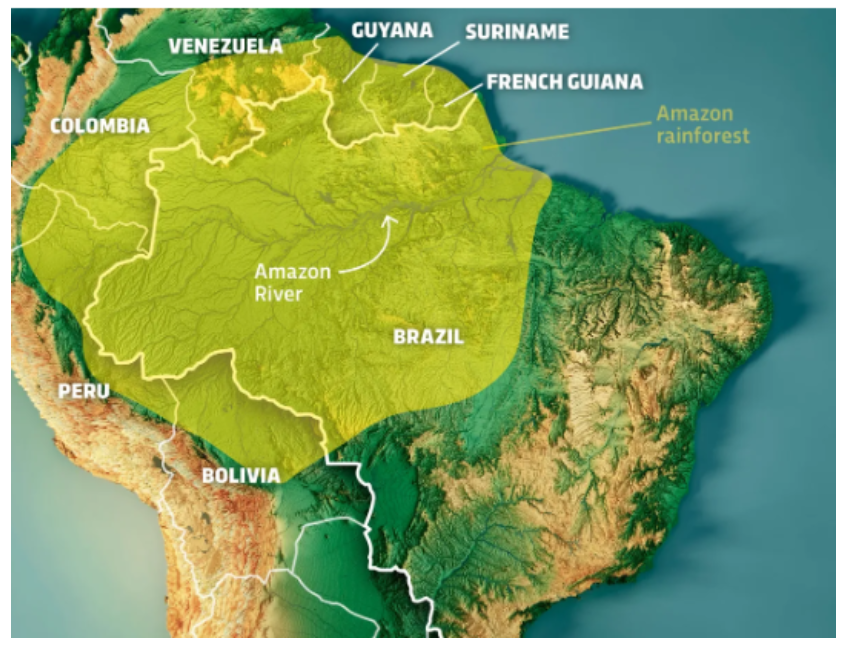Amazon River Faces Historic Low Water Levels as Climate Change-Induced Droughts Disrupt Transportation and Ecosystems
(Source: Indian Express; Section: The World)
| Topic: GS3 – Environment |
| Context: |
|
Analysis of News:

Impact on Transportation and Commerce
- The Amazon River, a crucial transportation route for remote regions in South America, has become gridlocked due to the severe drop in water levels. The drought has hampered the movement of people and goods, leaving boats unable to operate effectively.
- Communities, especially in the Brazilian state of Amazonas, are struggling to transport children to school, rush sick individuals to hospitals, and deliver essential supplies like medicine and drinking water.
- The city of Manaus, an important manufacturing hub, faces supply chain disruptions as shallow waters make it difficult for cargo ships to dock.
What is Dredging?
- Dredging is the removal of sediments and debris from the bottom of lakes, rivers, harbors, and other water bodies.
- It is a routine necessity in waterways around the world because sedimentation—the natural process of sand and silt washing downstream—gradually fills channels and harbors.
Dredging as an Unprecedented Solution
- In response to the crisis, Brazil has taken the extraordinary measure of dredging the Amazon River to ensure navigability during droughts.
- The dredging plan, initially used only in emergencies, will now be a continuous operation for the next five years. This effort reflects the global shift towards drastic measures to mitigate the impacts of extreme weather on daily life and transportation systems.
- The initiative underscores the harsh reality of climate change and its profound effects on vital ecosystems.
The Wider Implications of Climate Change on the Amazon
- The drying of the Amazon River also highlights the broader implications of climate change on the Amazon rainforest, which serves as the planet’s largest freshwater reservoir and plays a critical role in absorbing greenhouse gases.
- The ongoing droughts and their impact on the river ecosystem illustrate how a hotter, drier climate is reshaping not only the Amazon but also the global fight against climate change.
- As Brazil prepares for chronic drought conditions, it becomes clear that long-term solutions are necessary to protect this vital region.
| Amazon Rainforest |
|
| Practice Question: Analyze the impact of climate change on the Amazon River, focusing on the implications of record-low water levels and the broader ecosystem. What measures are being implemented to address these challenges, and what do they signify about the future of climate adaptation strategies in vulnerable regions? (150 words/10 m) |
